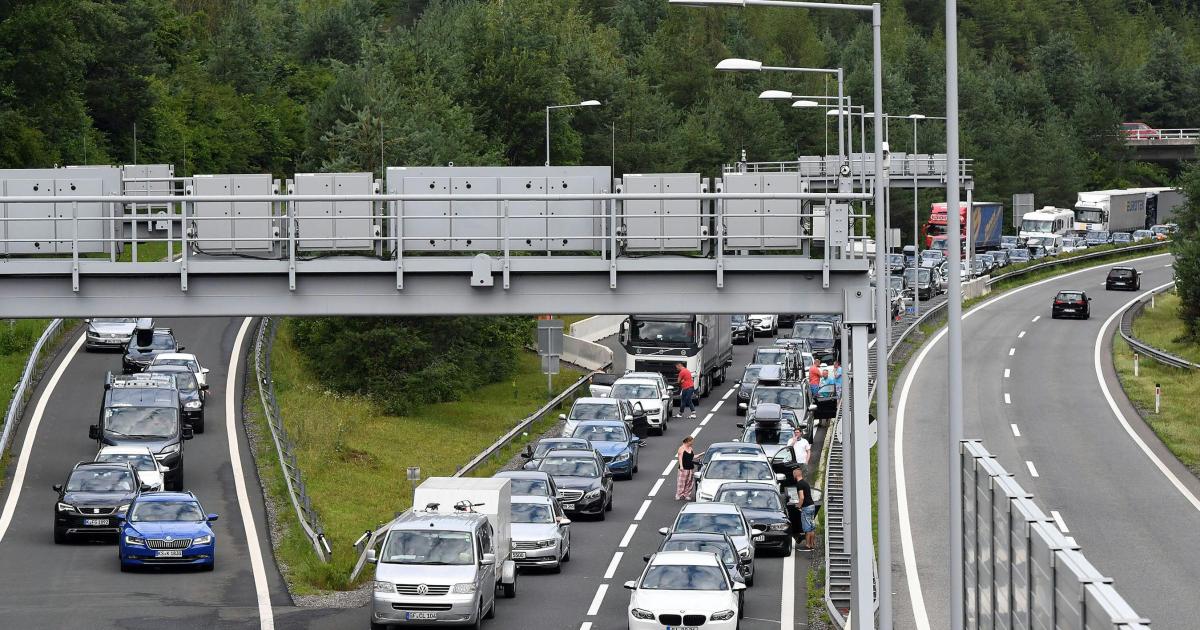The corona pandemic resulted in fewer traffic jams worldwide in 2020. According to a data analysis by the Dutch navigation device manufacturer TomTom, the time lost in traffic decreased in 387 of 416 cities examined. In 16 cases it stagnated, there was an increase in only 13 cities. In Vienna, Linz, Graz, Salzburg and Innsbruck, too, drivers were less jammed than in previous years – even if there were differences.
In Austria, the traffic jam capital was again Vienna last year. In general, drivers who were stuck in a traffic jam in the federal capital at any time in 2020 needed an average of 26 percent more time to drive than in free-flowing traffic. That is a decrease of two percentage points compared to 2019, especially in the rush hour in the morning and in the evening, the time lost was still high.
When to lose most of the time in Vienna
Those who always drove to work in Vienna at peak times would have spent three days and 22 hours in a traffic jam last year. A half-hour drive in the morning rush hour took eleven minutes longer, in the evening it was 14 minutes more. According to the TomTom analysis, the worst was always from Tuesday to Thursday between 4:00 p.m. and 6:00 p.m. – this is where the most time was lost.
Why this was the case despite two lockdowns with significantly lower traffic volumes is not entirely clear. According to TomTom, the fact that the otherwise popular local public transport was avoided by many employees during the pandemic in order to minimize the risk of infection should be particularly noticeable. Incidentally, most traffic in Vienna was recorded on October 13th.
Graz and Salzburg in second place
In 2020, Graz and Salzburg landed tied for second place in the domestic traffic jam ranking (each 23 percent more travel time compared to free-flowing traffic), although the decline in Salzburg compared to the previous year was slightly more pronounced than in Graz (minus three percentage points) at four percentage points. Two half-hour trips at rush hour in the morning and in the evening cost an extra 22 minutes on the Mur, and 20 minutes more on the Salzach. Time lost over the year: 82 or 75 hours. In both cities, November 16 – the day before the start of the second lockdown – was the day with the greatest delays in traffic.
In Linz and Innsbruck, journeys in 2020 took an annual average of 17 percent longer than with free journeys, both cities recorded the largest decline in Austria with five and six percentage points compared to 2019. The annual time loss in rush hour was 71 and 59 hours, respectively. the half-hour trips at peak times were extended by a total of 19 and 15 minutes in the previous year. In Linz, according to TomTom, January 27th was the busiest day in the previous year, and October 2nd in Innsbruck.
As the company analyzed, the development of the traffic jam level in the months after the first lockdown turned out to be very different from city to city: Innsbruck as a student and tourist city has returned to the familiar patterns from the previous year, but at a significantly lower level . In Vienna and Salzburg, on the other hand, there were hardly any differences in the course of the traffic jam level on working days as early as June. Values were almost at the previous year’s level – and in some cases even exceeded.
“From lockdowns to closed borders, people’s mobility has changed fundamentally – and very quickly,” explained Ralf-Peter Schäfer, head of the traffic data team at TomTom. However, one does not assume that the traffic load will remain so low if there is no targeted and conscious change in driving behavior.
Traffic will increase again
“In the next few months we will see that the volume of traffic will increase again. People will go back to work and return to old routines,” said Schäfer. An end to the rush hour through flexible working hours, home office and the smart use of traffic data to determine the best travel times, seems entirely possible. “But that also depends on political decision-makers and employers.”
In an international comparison, according to TomTom, drivers needed the most patience in 2020 in the greater Moscow area, in Mumbai, Bogota and Manila. In Europe it was after Moscow the cities of Istanbul and Kiev. Vienna comes in 99th place in the global ranking, Graz on 144, Salzburg on 148, Linz on 269 and Innsbruck on 278. Incidentally, the strongest increases last year were in Changchun, China, and Taoyuan in Taiwan.
The complete ranking and details of the survey method can be found here. For the evaluation, TomTom analyzed the anonymized data of more than 600 million drivers worldwide.
–

